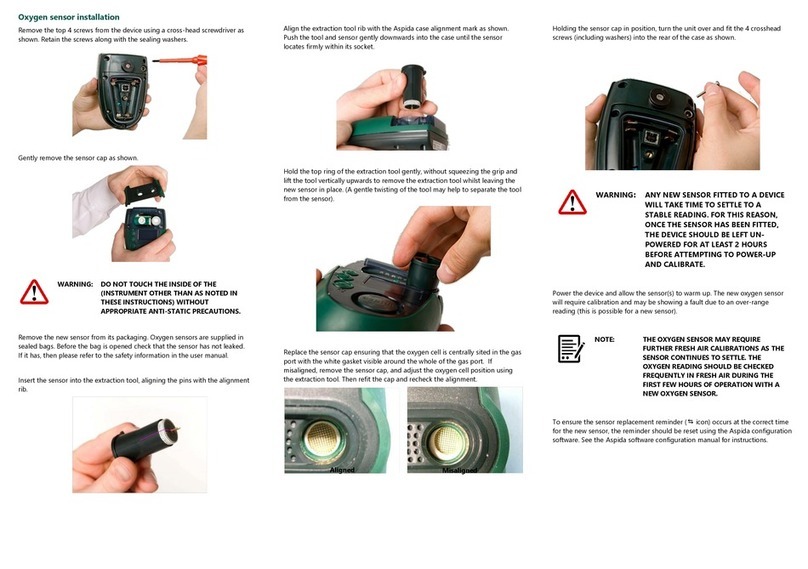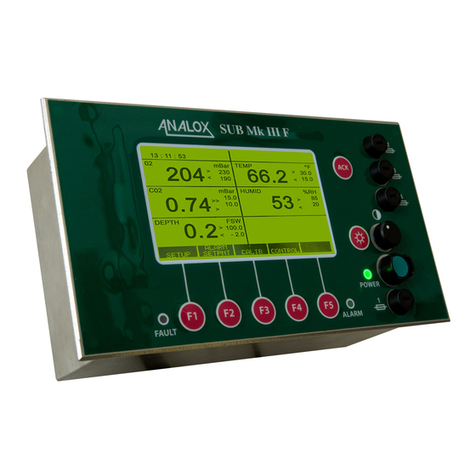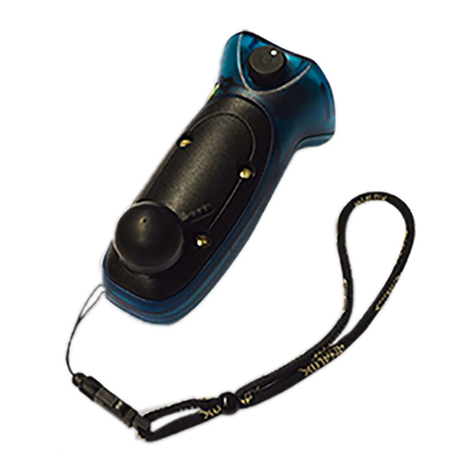ADM, HBOT & Sub Aspida
User Manual Int. Approved
Document ref: PSA-811-14 June 2017 Page 1 of 43
Copyright © 2017 Analox Ltd. All Rights Reserved.
Commercial in Confidence
List of Contents
1Safety information ......................................................................................................................................................... 3
2Package contents checklist......................................................................................................................................... 4
3Aspida devices overview............................................................................................................................................. 6
3.1 Aspida main features .......................................................................................................................................... 8
4Installation ........................................................................................................................................................................ 9
4.1 Installation of the Sub Aspida & HBOT Aspida.......................................................................................... 9
4.1 Installation of the ADM Aspida........................................................................................................................ 9
4.2 Gaining access to the ADM Aspida..............................................................................................................10
4.3 Battery installation.............................................................................................................................................11
4.4 Charging the Analox Aspida...........................................................................................................................12
5Operation........................................................................................................................................................................14
5.1 Button functions .................................................................................................................................................14
5.2 Switching the device on/off ............................................................................................................................14
5.3 User registration .................................................................................................................................................14
5.4 The main display.................................................................................................................................................15
5.5 Screen saver.........................................................................................................................................................15
5.6 Battery status ......................................................................................................................................................16
5.7 Menus.....................................................................................................................................................................16
5.8 Common menu items........................................................................................................................................17
5.9 Gas alarms............................................................................................................................................................18
5.10 Global alarm options .........................................................................................................................................19
5.11 Alarm latching .....................................................................................................................................................19
5.12 Alarm muting.......................................................................................................................................................19
5.13 Quiet alarms.........................................................................................................................................................20
5.14 Data logging.........................................................................................................................................................21
5.15 Man-down alarm................................................................................................................................................21
5.16 Panic alarm...........................................................................................................................................................22
5.17 Time-weighted average (TWA) monitoring of carbon dioxide...........................................................22
5.18 Maintenance reminders....................................................................................................................................23
5.19 Calibration reminders........................................................................................................................................23
5.20 Sensor replacement reminders......................................................................................................................23
5.21 Faults......................................................................................................................................................................24
5.22 Troubleshooting..................................................................................................................................................24
6Maintenance ..................................................................................................................................................................25
6.1 Spares & accessories ........................................................................................................................................25
6.2 Calibration.............................................................................................................................................................26
6.3 Sensor calibration...............................................................................................................................................26
6.4 Oxygen sensor replacement...........................................................................................................................28
6.5 Cleaning.................................................................................................................................................................35
7Specifications ................................................................................................................................................................36
8Warranty information.................................................................................................................................................38
9Declaration of conformity..........................................................................................................................................39
10 Disposal......................................................................................................................................................................40
10.1 WEEE statement ................................................................................................................................................40
10.2 Oxygen sensor disposal...................................................................................................................................40





































